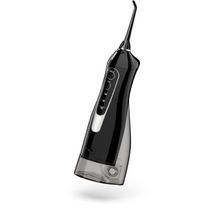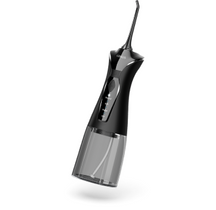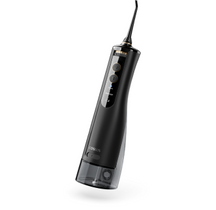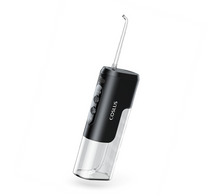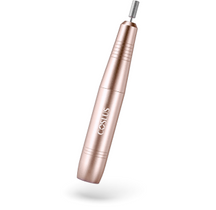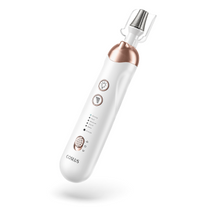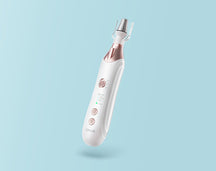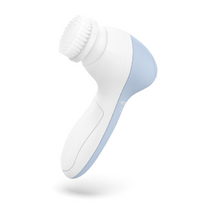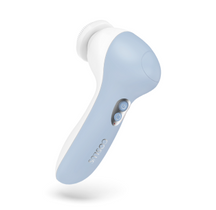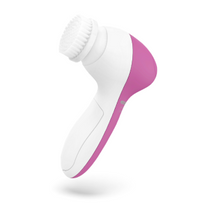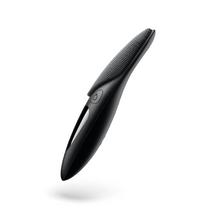
Are Electric Nail Files Safe for Your Natural Nails?
Quick Answer
Electric nail files are safe for natural nails when used correctly. The key is how you use them, not the tool itself. Keep speeds between 5,000-7,500 RPM for natural nails and always keep the file moving. Don't press too hard or file in one spot too long, as this creates heat that damages nails. Watch for warning signs like bendy nails, see-through spots, or pain after filing—these mean you're filing too much. Most people only need to file once a week to keep nails healthy and strong.
Introduction
If you've ever questioned whether electric nail files might harm your natural nails, you're not alone. Many people worry about potential damage while being attracted to the professional results these devices promise. Electric nail files (or e-files) have gained popularity in home nail care routines, yet concerns persist about their impact on nail health. When used correctly, these motorized tools can actually be completely safe for your natural nails. The key factor isn't the device itself but rather how you use it - proper technique and appropriate speed settings make all the difference between damaged nails and beautifully maintained ones.
What are Electric Nail Files (E-Files)?
Electric nail files, often called e-files or nail drills, are handheld motorized tools designed to shape, buff, and maintain both natural and artificial nails. Unlike traditional emery boards or manual nail files that require physical back-and-forth motion, e-files use a rotating bit powered by an electric motor to perform filing tasks with minimal manual effort.
The fundamental difference between e-files and regular nail files lies in their operation. While manual files rely on your hand movements and pressure, electric files maintain consistent speed and power through their motor. This motorized action allows for precise control, especially when working on small areas or performing detailed nail art.
E-files have numerous substantial advantages over traditional filing methods. The accuracy they provide allows for the creation of symmetrical shapes and smooth edges that are difficult to achieve manually. They save time to a significant extent, with experts able to complete work much more rapidly. They are also excellent for gel polish, acrylics, and other hard nail extensions that would require a lot of manual work to be removed otherwise.
An electric nail file is usually made up of a series of essential components. The motor resides in the handpiece and is also used as the handle. The chuck securely retains interchangeable bits. Various types of bits are employed for various purposes: barrel bits for cutting and shaping, cone bits for precision in tight spaces, mandrel bits for gripping sanding bands, and specialty bits like diamond or ceramic ones for specific materials. The device typically includes a control box with speed settings ranging from 3,000 to 35,000 RPMs, allowing users to adjust power based on the task and nail type.
The Great Debate: E-Files vs. Hand Filing
When it comes to nail care, professionals and enthusiasts often find themselves choosing sides between electric nail files and traditional hand filing methods. Both approaches serve the same fundamental purpose—shaping and maintaining nails—but they differ significantly in technique, results, and potential risks.
| Feature | Electric Nail Files | Traditional Hand Files |
| Speed | 3-5 minutes to remove gel polish vs. 10-15 minutes with hand filing | Takes roughly 3x longer; removing gel polish may take 10-15 minutes |
| Control | Depends on skill and practice; beginners may struggle with pressure | Easy to control by hand; you feel exactly how much pressure you're applying |
| Learning Time | May take 2-4 weeks of regular practice to use safely | Can be learned in a single session; intuitive for most people |
| Detail Work | Great for smoothing edges and hard-to-reach areas when mastered | More difficult to achieve perfect smoothness, especially in cuticle areas |
| Safety | Can damage nails through heat or over-filing if used carelessly | Generally gentle on nails; harder to accidentally remove too much nail |
| Material Handling | Easily removes hard products like acrylics, dip powder, and thick gel | Struggles with hard materials; may cause hand fatigue with tough products |
| Cost | Higher upfront cost ($25-$300+) | Budget-friendly ($1-$15 for quality files) |
| Comfort | Makes noise and vibrates during use | Silent and no vibration |
Electric nail files clearly outperform traditional files when efficiency and handling tough materials are the priority, while hand filing remains superior for beginners and those prioritizing gentle treatment of natural nails.
What Risks Do E-Files Pose to Natural Nails When Used Incorrectly?
Electric nail files are efficient and precise, but can damage nails if used incorrectly. The most common issues are thinning of the nail plate, leading to weakened nails and breakage; painful heat buildup during filing; peeling or splitting of nail layers; and micro-trauma, which may lead to infection when the protective nail barrier is compromised. In severe cases, improper e-file use can even lead to the separation of the nail from the nail bed (onycholysis).
Electric nail files aren't inherently risky—the real issue lies in technique. When used correctly, even professional-grade e-files are completely safe for your natural nails. Just look at experienced nail technicians who've been using them daily for years without causing any damage to their clients' nails.
The difference between nail damage and beautiful results isn't the e-file itself—it's how you use it. These four essential techniques prevent thinning, heat buildup, and other problems that occur when electric files are used incorrectly.
1. Set the Correct Speed
Apply 5,000-8,000 RPM to natural nails. Apply 8,000-12,000 RPM to product removal. Reserve speeds over 12,000 RPM for artificial nails only by a professional. Start low, especially with thin or damaged nails. Gradually build up if needed.
2. Utilize the Right Angle and Pressure
Hold the e-file at a 45-degree angle to the nail. Press lightly—let the bit do the work. Use small sweeps to avoid heat buildup. File in the direction of nail growth on natural nails. If you experience vibration or discomfort, you're pressing too hard.
3. Select the Correct Bits
For natural nails, use fine-grit (180+) ceramic bits or sanding bands. It's alright to shape artificial nails with medium grit (120-180). Take off artificial products only with a coarse grit (80-120). Cuticle bits are rounded-end bits. Recycle broken bits—they'll tear your nails.
4. Don't Overdo It
File each nail for just a few seconds. Don't repeat the same spot over and over. Check your progress every now and then. Stop at once if the nail begins to warm up—damage is being done. Good air circulation enables you to see and keeps you from breathing in dust.
E-File Troubleshooting: Quick Fixes for 4 Common Nail Drill Problems
Problem 1: Handpiece Gets Hot During Use
Fix it fast: Reduce your speed setting and clean dust air vents. Don't push so hard—let the bit work for you. Make sure that your bit's spinning steadily without wobbling. If it's still warm after these fixes, give your machine time to cool down.
Problem 2: Power Drops or Speed Changes
Fix it fast: Clean your handpiece thoroughly, with special attention to the area of the chuck where dust builds up. Check your power cord for wear and verify that it's plugged in. Examine and replace carbon brushes on professional machines as needed. Test using alternate bits to see if the problem persists.
Problem 3: Too Much Vibration
Fix it fast: Make sure your bit goes in straight, and the chuck is tightened completely. Inspect bent or broken bits and replace them as soon as possible. Clean out the chuck thoroughly—even a small bit of dust will cause the machine to wobble. If vibration continues, bearings might need to be replaced.
Problem 4: Machine Won't Turn On
Fix it fast: Try a different outlet to rule out power supply issues. Check connections at both ends of the power cord. If your e-file has a foot pedal, make sure it's properly connected. Look for power switches or reset buttons you might have missed. For machines with fuses, check if they need replacement.
What Speed Should I Use to File My Natural Nails?
If an electric nail file is to be applied to natural nails, controlling the speed is necessary for safety. For natural nail work, use speeds between 5,000-7,500 RPM. These speeds offer enough power and protection for your natural nails from being damaged.
Different parts of the natural nail require different speeds:
1. For working near the cuticle region, reduce to 5,000-6,000 RPM and take special care. This delicate area is bruised easily by excess speed or pressure.
2. For polishing the nail surface, 6,000-7,000 RPM provides good control while efficiently smoothening out imperfections.
3. To shape the free edge, you can use 6,500-7,500 RPM with the proper bits for natural nails.
Your bit's diameter also affects effective speed - wider diameter bits produce more friction, so reduce your speed by 1,000-1,500 RPM when cutting with wider bits (over 1/4\" diameter). Begin at the lowest recommended speed and gradually increase as your skill level and comfort level grow.
On natural nails, which are about as thin as a business card, you need to have total control. When e-filing, keep the speed slow enough that you can feel the full effect of the amount of nails you are removing. If you start to feel heat or notice the nail dust building up too quickly, you're doing it too fast or using too much pressure.
Beginners should start at 5,000 RPM until developing a feel for the machine. With practice, you'll discover that proper e-file use involves constant movement rather than higher speeds. This gentle approach protects the nail while still achieving professional results.
Can You File Your Nails Too Much?
Yes, you can certainly over-file your nails, leading to nail plate weakening and reducing its structural integrity. Overfilling damages nails, making them split, peel, and break. Filing away once, the nail plate cannot be "repaired" - it must grow out completely, which will take 4-6 months for fingernails.
Warning signs that you're over-filing are:
1. More nail flexibility - healthy nails do have some stiffness; if you've filed so much that your nails bend greatly, you've likely removed too many layers.
2. White spots or translucency - if the nail becomes more transparent than usual or white spots develop, it is a sign of thinning of the nail plate.
3. Heat sensitivity - over-filed nails are heat-sensitive or hot water-sensitive.
4. Ridges more prominent - this can occur if filing removes surface layers, which eliminates natural ridges.
5. Pain or soreness upon filing - pain or tenderness should not originate from healthy filing.
Use Your E-File Right — Keep Your Nails Strong and Bright
Using an electric nail file doesn't have to be complicated. Whether you're just starting out or you've been doing nails for years, the key is matching your e-file to your skills and treating your nails with care. Keep speeds between 5,000-7,500 RPM for natural nails, and remember that feeling heat or seeing lots of dust means you should slow down. Clean your machine after each use and give it a deeper clean monthly to keep it running well. Pay attention to your nails too—if they feel thin, flexible, or sensitive after filing, you're probably filing too much. Most people only need to file once a week, and always in one direction.
Table of Contents
- Quick Answer
- Introduction
- What are Electric Nail Files (E-Files)?
- The Great Debate: E-Files vs. Hand Filing
- What Risks Do E-Files Pose to Natural Nails When Used Incorrectly?
- 4 Step to Use E-Files Safely
- E-File Troubleshooting: Quick Fixes for 4 Common Nail Drill Problems
- What Speed Should I Use to File My Natural Nails?
- Can You File Your Nails Too Much?
- Use Your E-File Right — Keep Your Nails Strong and Bright
Table of Contents
- Quick Answer
- Introduction
- What are Electric Nail Files (E-Files)?
- The Great Debate: E-Files vs. Hand Filing
- What Risks Do E-Files Pose to Natural Nails When Used Incorrectly?
- 4 Step to Use E-Files Safely
- E-File Troubleshooting: Quick Fixes for 4 Common Nail Drill Problems
- What Speed Should I Use to File My Natural Nails?
- Can You File Your Nails Too Much?
- Use Your E-File Right — Keep Your Nails Strong and Bright


